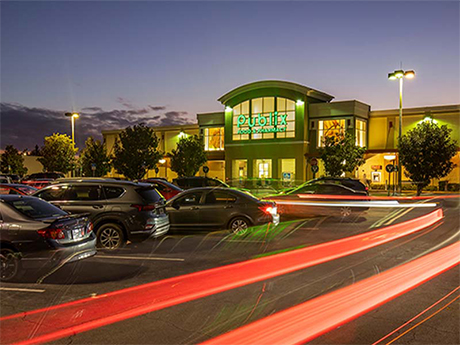The retail market in the Orlando MSA is doing well, on the surface. According to the numbers, the region has recovered from the effects of the COVID-19 pandemic. Orlando’s economy is heavily driven by tourism and when travel stopped and the initial state-wide shutdown orders went into effect on April 3, 2020, the impacts were profound and widespread, since four of the top 10 employers in Central Florida are in hospitality or retail, as well as Orlando International Airport.
Since then, life in Central Florida has largely returned to normal. Tourism is back, hotel occupancy is up and people are dining out again. Retail numbers for the second quarter are actually better than in the first quarter of 2019, according to CoStar Group. The availability percentage at the beginning of 2019 was 5.9 percent, compared to 4.7 percent at the end of the second quarter. The average rent is up as well, rising from $21.94 per square foot to $25.52.
Consumer habits have changed as e-commerce is still enormously popular, although it’s now more about convenience than mitigating risks.
For those who can, working from home has become the preferred mode. As a consequence of the remote work trend, local population growth has accelerated as many people relocate because if you’re working remotely anyway, why not from a comparatively affordable Orlando?
Dark clouds looming?
Yet underneath all the rosy numbers there is an uneasy feeling. A great many of the same factors that have allowed Central Florida to flourish again have begun to create issues, and the mood is beginning to trend down.
According to the Orlando Economic Partnership, as of 2019, 53.3 percent of the employment in Central Florida was in the leisure and hospitality, education and health services, retail trade and government sectors. All of these sectors took major hits in early 2020 that lasted through the first half of 2021.
As a consequence, many workers moved on to different areas of employment. Some, particularly women with young children, have left the workforce entirely as they have been unable to find or afford childcare.
Retail establishments of all kinds, large and small, are struggling to find employees. Restaurants are short-staffed and many are forced to reduce hours because they simply don’t have enough people.
Hotels are likewise struggling to keep up with high occupancy. Many childcare facilities closed for good, and those remaining are unable to find enough employees to meet demand. Right now, air travel is deeply unpleasant and is plagued with complications due to lack of employees — from ticket agents to pilots.
Another factor weighing on the area is inflation. Most notably we see it with skyrocketing rents. According to The Washington Post, the average rent for a one-bedroom apartment has increased 24 percent year-over- year. Per the Orlando Business Journal, the local rental market is the 13th most overvalued in the entire country. Inflation and “shrinkflation” are major anchors to the economy.
Food prices are up 10.8 percent year-over-year as of April 2022, which is the largest 12-month increase since November 1980 (according to the U.S. Bureau of Labor Statistics). Gas prices have begun to come down, but the average gas price today (July 27) is $3.98 per gallon, according to AAA. On July 27, the Federal Reserve announced another 0.75-percent hike to the federal funds rate. This will make credit card debt, car purchases and homeownership more expensive.
As a result, discretionary income is taking a hit. Anything other than basic expenses, from eating out to streaming services to traveling, are on the chopping block. The effect on the retail market will be substantial. Restaurants are going to be hit with increasing expenses at the same time sales are going down.
Increasing gas prices will both drive e-commerce (reducing individual trips and limiting profitable in-store impulse shopping) while increasing gas costs cut into profits.
People are planning shopping trips to reduce gas use and eliminate any unnecessary errands or destinations. With back-to-school shopping in full force, many people are trimming any expenditures they can.
Outlook
All in all, right now the numbers in the Central Florida retail market look good. If inflation, gas prices and cost increases due to production or shipping issues ease in the near-term, then the market will continue to be fine.
The Central Florida retail market has proven its resiliency time after time. The current circumstances will be no different — there will be winners and losers, but the overall ecosystem is strong and will continue to flourish.
— By Patrick Mahoney, President and CEO, NAI Realvest. This article was originally published in the August 2022 issue of Southeast Real Estate Business.



